What Is the V-Model in Software Development?

The V-model is named after its shape, which resembles the letter “V.” In the V-model, we divide the software development life cycle into phases and each phase is associated with a corresponding testing phase. The left-hand side of the V represents the verification phase while the right-hand side represents the validation phase.
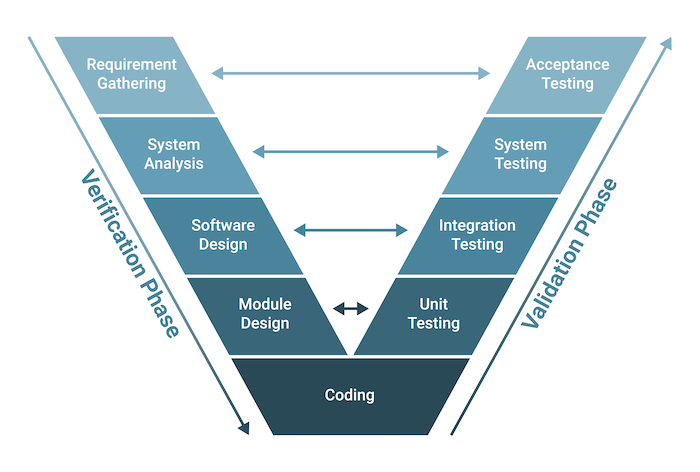

When to Use a V-Model
You’ll want to use a V-model in situations wherein the requirements and understanding of the software’s functionality are well-defined from the beginning. In cases where the project scope is clear, and the development team has a solid understanding of the requirements, the V-model can be an effective tool for delivering high-quality software.
The V-model is useful when working with larger teams where communication and coordination between developers and testers becomes challenging. By clearly defining the testing requirements for each stage of the development process, the V-model can ensure that all team members are working toward a shared understanding of the project’s goals and objectives.
More on Software Development What Is the Waterfall Methodology?
V-Model Verification Phases
The verification phase refers to the practice of evaluating the product development process to ensure the team meets the specified requirements.
The verification phase includes several steps: business requirement analysis, system analysis, software architecture design, module design and coding.
In the business requirement analysis step, the team comes to understand the product requirements as laid out by the customer.
In the system analysis step, the system engineers analyze and interpret the business requirements of the proposed system by studying the user requirements document.
In the software architecture design stage, the team selects the software architecture based on the list of modules, the brief functionality of each module, the interface relationships, dependencies, database tables, architecture diagrams, technology detail and more. The integration testing model is developed in this phase.
In the module design stage, the development team breaks down the system into small modules and specifies the detailed design of each module, which we call low-level design.
Finally, we begin coding . The development team selects a suitable programming language based on the design and product requirements. There are, of course, guidelines and standards for coding and the code will go through many reviews to check its performance.
V-Model Validation Phases
The validation phase involves dynamic analysis methods and testing to ensure the software product meets the customer’s requirements and expectations. This phase includes several stages including unit testing , integration testing, system testing and acceptance testing.
During the unit testing stage, the team develops and executes unit test plans to identify errors at the code or unit level. This testing happens on the smallest entities, such as program modules, to ensure they function correctly when isolated from the rest of the code.
The integration testing stage involves executing integration test plans developed during the architectural design step in order to verify that groups created and tested independently can coexist and communicate with each other.
The system testing stage involves executing system test plans developed during the system design step, which are composed by the client’s business team. System testing ensures the team meets the application developer’s expectations.
The acceptance testing step is related to the business requirement analysis part of the V-model and involves testing the software product in the user environment to identify compatibility issues with the different systems available within the user environment. Acceptance testing also identifies non-functional issues like load and performance defects in the real user environment.
Principles of V-Model
The V-model emphasizes the importance of testing and quality assurance throughout the entire development process. Here are some of the V-model’s key principles.
Integrate Testing Throughout Development
Testing is not just an activity that happens at the end of the development process. Instead, testing is integrated into every stage of the development lifecycle, from requirements gathering to deployment.
Plan Testing in Parallel With Development
Each stage of the development process has a corresponding testing phase. Testing activities are planned in parallel with development activities so that the necessary resources are available to support testing.
Prevent Defects
The V-model emphasizes the importance of preventing defects rather than simply identifying and fixing them after they’ve been discovered.
Develop Clear and Concise Requirements
The V-model places great emphasis on clear and concise requirements. Without a clear understanding of what the software is supposed to do, it’s impossible to develop effective tests or to build high-quality software.
Combine Development and Testing
In the V-model, development and testing are not separate activities. Instead, they are closely integrated and collaboration between developers and testers is critical for ensuring that the software meets the required quality standards.
Advantages to Using the V-Model
- Improves Quality : From the beginning, the V-model ensures that quality is built into the development process, which results in fewer bugs in code and higher-quality software.
- Reduces Risks : The V-model provides a clear roadmap for the entire development process , which allows for better risk management and mitigation.
- Increases Efficiency : The V-model encourages collaboration between different teams and stakeholders , which results in more efficient development and testing.
- Improves Communication : The V-model emphasizes communication between stakeholders, to ensure everyone has a clear understanding of the requirements and objectives.
- Enhances Testing : The V-model places a strong emphasis on thorough and effective testing throughout the entire development process.
- Improves Documentation : The V-model requires comprehensive documentation at every stage of the development process, which leads to better record-keeping and easier code maintenance.
Disadvantages to Using the V-Model
- Rigid : The V-model can be inflexible and provide very little room for changes or deviations from the plan. This rigidity can make it difficult to adapt to changing project requirements or new information.
- Time-Consuming : The V-model can be time-consuming due to its focus on thorough planning and documentation at every stage. These factors can slow down the development process and lead to longer project timelines.
- Resource Intensive : The V-model requires a significant amount of resources including time, budget and personnel, thereby making it a difficult model for small teams or organizations with limited resources to implement.
- Limited Agility : The V-model may not be well suited for Agile development approaches, which rely on flexibility, iterative development and continuous feedback.
- Overemphasis on Testing : While thorough testing is a critical component of software development, the V-Model may place too much emphasis on testing, which can lead to production delays and increased costs.
Built In’s expert contributor network publishes thoughtful, solutions-oriented stories written by innovative tech professionals. It is the tech industry’s definitive destination for sharing compelling, first-person accounts of problem-solving on the road to innovation.
Great Companies Need Great People. That's Where We Come In.
- Software Engineering Tutorial
Software Development Life Cycle
- Waterfall Model
- Software Requirements
- Software Measurement and Metrics
- Software Design Process
- System configuration management
- Software Maintenance
- Software Development Tutorial
- Software Testing Tutorial
- Product Management Tutorial
- Project Management Tutorial
- Agile Methodology
- Selenium Basics
- Software Development | Introduction, SDLC, Roadmap, Courses
- What is Software Development?
- Software Development Life Cycle (SDLC)
- Software Development Models - SDLC Models
- Top Software Development Topics to prepare for Interview
- Software Developer (SDE) Interview/Placement Preparation Guide
Software Development Evolution & Trends
- Evolution of Software Development | History, Phases and Future Trends
- 10 Reasons Why Software Development is Important ?
- Top 12 Software Development Languages [2024]
- Latest Software Development Technology/Trends to look out for [2024]
- Most Popular Software Development Companies in India 2023-2024
- Software Development Process
- Software paradigm and Software Development Life Cycle (SDLC)
- Top 5 SDLC(Software Development Life Cycle ) Methodologies
- Bug Life Cycle in Software Development
- Software Development Process Step by Step Guide | Requirement, Plan, Design, Develop & Deploy
- Role of Verification and Validation (V&V) in SDLC
- Software Quality - Software Engineering
- Software Testing Life Cycle (STLC)
Software Development Models & Methodologies
- What is SDLC(Software Development Life Cycle) and its phases
- 5 Most Commonly used Software Development Methodologies
- Top 8 Software Development Life Cycle (SDLC) Models used in Industry
- Waterfall Model - Software Engineering
- Spiral Model - Software Engineering
- Advantages and Disadvantages of using Spiral Model
- SDLC V-Model - Software Engineering
- Prototyping Model - Software Engineering
- Rapid application development model (RAD) - Software Engineering
- Agile Software Development - Software Engineering
- Waterfall vs Agile Development | Software Development Life Cycle Models
Agile Software Development
- Agile Software Development Methodology | Framework, Principles, and Benefits
- Agile Development Models - Software Engineering
- Agile Methodology Advantages and Disadvantages
- Agile SDLC (Software Development Life Cycle)
- User Stories in Agile Software Development
- Crystal methods in Agile Development/Framework
- Agile Software Testing
- Agile Software Process and it's Principles
- What are the 4 Agile Values?
- Scrum (software development)
- Lean Software Development (LSD)
Software Developer Jobs
- Software Developer - Salary, Skills and Future Career
- Software Development Team: Designations & Structure
- 10 Crucial Team Roles in a Software Development Team
- Senior Software Engineer Job Description
- 7 Best Software Development Trends to Follow
Comparisons in Software Development
- Difference between Software Development, Web Development and App Development
- Difference between Traditional and Agile Software Development
- Competitive Programming vs Software Development - Where Should I Invest My Time?
- Difference between Full stack developer and Software developer
- Difference between Software Developer and Software Designer
- Difference between Agile and SDLC
Software Development Advanced Topics
- A Complete Overview of Android Software Development for Beginners
- What is Software Security - Definition and Best Practice?
- Introduction to Exploratory Style of Software Development
- How to Keep Your Skills Updated As a Software Developer?
- Characteristics of Adaptive Software Development
SDLC V-Model – Software Engineering
The V-model is a type of SDLC model where the process executes sequentially in a V-shape. It is also known as the Verification and Validation model. It is based on the association of a testing phase for each corresponding development stage. The development of each step is directly associated with the testing phase. The next phase starts only after completion of the previous phase i.e., for each development activity, there is a testing activity corresponding to it.
Table of Content
V-Model Design
Importance of v-model, principles of v-model.
- When to Use of V-Model?
- Advantages of V-Model
Disadvantages of V-Model
The V-Model is a software development life cycle (SDLC) model that provides a systematic and visual representation of the software development process. It is based on the idea of a “V” shape, with the two legs of the “V” representing the progression of the software development process from requirements gathering and analysis to design, implementation, testing, and maintenance.
- Requirements Gathering and Analysis : The first phase of the V-Model is the requirements gathering and analysis phase, where the customer’s requirements for the software are gathered and analyzed to determine the scope of the project.
- Design: In the design phase, the software architecture and design are developed, including the high-level design and detailed design.
- Implementation: In the implementation phase, the software is built based on the design.
- Testing: In the testing phase, the software is tested to ensure that it meets the customer’s requirements and is of high quality.
- Deployment: In the deployment phase, the software is deployed and put into use.
- Maintenance: In the maintenance phase, the software is maintained to ensure that it continues to meet the customer’s needs and expectations.
- The V-Model is often used in safety: critical systems, such as aerospace and defence systems, because of its emphasis on thorough testing and its ability to clearly define the steps involved in the software development process.
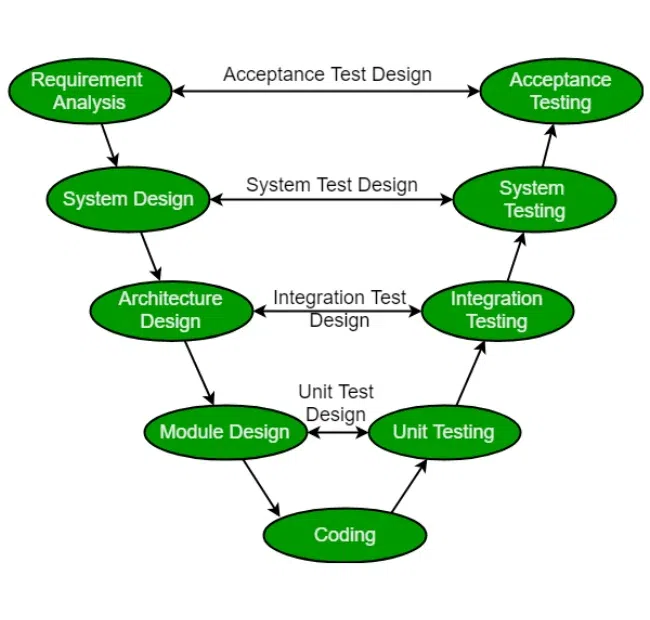
SDLC V-Model
The following illustration depicts the different phases in a V-Model of the SDLC.
Verification Phases :
It involves a static analysis technique (review) done without executing code. It is the process of evaluation of the product development phase to find whether specified requirements are met.
There are several Verification phases in the V-Model:
Business Requirement Analysis:
This is the first step of the designation of the development cycle where product requirement needs to be cured from the customer’s perspective. in these phases include proper communication with the customer to understand the requirements of the customers. these are the very important activities that need to be handled properly, as most of the time customers do not know exactly what they want, and they are not sure about it at that time then we use an acceptance test design planning which is done at the time of business requirement it will be used as an input for acceptance testing.
System Design:
Design of the system will start when the overall we are clear with the product requirements, and then need to design the system completely. This understanding will be at the beginning of complete under the product development process. these will be beneficial for the future execution of test cases.
Architectural Design:
In this stage, architectural specifications are comprehended and designed. Usually, several technical approaches are put out, and the ultimate choice is made after considering both the technical and financial viability. The system architecture is further divided into modules that each handle a distinct function. Another name for this is High-Level Design (HLD).
At this point, the exchange of data and communication between the internal modules and external systems are well understood and defined. During this phase, integration tests can be created and documented using the information provided.
Module Design:
This phase, known as Low-Level Design (LLD), specifies the comprehensive internal design for every system module. Compatibility between the design and other external systems as well as other modules in the system architecture is crucial. Unit tests are a crucial component of any development process since they assist in identifying and eradicating the majority of mistakes and flaws at an early stage. Based on the internal module designs, these unit tests may now be created.
Coding Phase:
The Coding step involves writing the code for the system modules that were created during the Design phase. The system and architectural requirements are used to determine which programming language is most appropriate.
The coding standards and principles are followed when performing the coding. Before the final build is checked into the repository, the code undergoes many code reviews and is optimized for optimal performance.
Validation Phases :
It involves dynamic analysis techniques (functional, and non-functional), and testing done by executing code. Validation is the process of evaluating the software after the completion of the development phase to determine whether the software meets the customer’s expectations and requirements.
So, V-Model contains Verification phases on one side of the Validation phases on the other side. The verification and Validation phases are joined by the coding phase in a V-shape. Thus, it is called V-Model. There are several Validation phases in the V-Model:
Unit Testing:
Unit Test Plans are developed during the module design phase. These Unit Test Plans are executed to eliminate bugs in code or unit level.
Integration testing:
After completion of unit testing Integration testing is performed. In integration testing, the modules are integrated and the system is tested. Integration testing is performed in the Architecture design phase. This test verifies the communication of modules among themselves.
System Testing:
System testing tests the complete application with its functionality, inter-dependency, and communication. It tests the functional and non-functional requirements of the developed application.
User Acceptance Testing (UAT):
UAT is performed in a user environment that resembles the production environment. UAT verifies that the delivered system meets the user’s requirement and the system is ready for use in the real world.
Design Phase:
- Requirement Analysis: This phase contains detailed communication with the customer to understand their requirements and expectations. This stage is known as Requirement Gathering.
- System Design: This phase contains the system design and the complete hardware and communication setup for developing the product.
- Architectural Design: System design is broken down further into modules taking up different functionalities. The data transfer and communication between the internal modules and with the outside world (other systems) is clearly understood.
- Module Design: In this phase, the system breaks down into small modules. The detailed design of modules is specified, also known as Low-Level Design (LLD).
Testing Phases:
- Unit Testing: Unit Test Plans are developed during the module design phase. These Unit Test Plans are executed to eliminate bugs at the code or unit level.
- Integration testing: After completion of unit testing Integration testing is performed. In integration testing, the modules are integrated, and the system is tested. Integration testing is performed in the Architecture design phase. This test verifies the communication of modules among themselves.
- System Testing: System testing tests the complete application with its functionality, interdependency, and communication. It tests the functional and non-functional requirements of the developed application.
- User Acceptance Testing (UAT): UAT is performed in a user environment that resembles the production environment. UAT verifies that the delivered system meets the user’s requirement and the system is ready for use in the real world.
Industrial Challenge:
As the industry has evolved, the technologies have become more complex, increasingly faster, and forever changing, however, there remains a set of basic principles and concepts that are as applicable today as when IT was in its infancy.
- Accurately define and refine user requirements.
- Design and build an application according to the authorized user requirements.
- Validate that the application they had built adhered to the authorized business requirements.
1. Early Defect Identification
By incorporating verification and validation tasks into every stage of the development process, the V-Model encourages early testing. This lowers the cost and effort needed to remedy problems later in the development lifecycle by assisting in the early detection and resolution of faults.
2. determining the Phases of Development and Testing
The V-Model contains a testing phase that corresponds to each stage of the development process. By ensuring that testing and development processes are clearly mapped out, this clear mapping promotes a methodical and orderly approach to software engineering.
3. Prevents “Big Bang” Testing
Testing is frequently done at the very end of the development lifecycle in traditional development models, which results in a “Big Bang” approach where all testing operations are focused at once. By integrating testing activities into the development process and encouraging a more progressive and regulated testing approach, the V-Model prevents this.
4. Improves Cooperation
At every level, the V-Model promotes cooperation between the testing and development teams. Through this collaboration, project requirements, design choices, and testing methodologies are better understood, which improves the effectiveness and efficiency of the development process.
5. Improved Quality Assurance
Overall quality assurance is enhanced by the V-Model, which incorporates testing operations at every level. Before the program reaches the final deployment stage, it makes sure that it satisfies the requirements and goes through a strict validation and verification process.
- Large to Small: In V-Model, testing is done in a hierarchical perspective, for example, requirements identified by the project team, creating High-Level Design, and Detailed Design phases of the project. As each of these phases is completed the requirements, they are defining become more and more refined and detailed.
- Data/Process Integrity: This principle states that the successful design of any project requires the incorporation and cohesion of both data and processes. Process elements must be identified at every requirement.
- Scalability: This principle states that the V-Model concept has the flexibility to accommodate any IT project irrespective of its size, complexity, or duration.
- Cross Referencing: A direct correlation between requirements and corresponding testing activity is known as cross-referencing.
Tangible Documentation:
This principle states that every project needs to create a document. This documentation is required and applied by both the project development team and the support team. Documentation is used to maintain the application once it is available in a production environment.
Why preferred?
- It is easy to manage due to the rigidity of the model. Each phase of V-Model has specific deliverables and a review process.
- Proactive defect tracking – that is defects are found at an early stage.
When to Use of V-Model ?
- Traceability of Requirements: The V-Model proves beneficial in situations when it’s imperative to create precise traceability between the requirements and their related test cases.
- Complex Projects: The V-Model offers a methodical way to manage testing activities and reduce risks related to integration and interface problems for projects with a high level of complexity and interdependencies among system components.
- Waterfall-Like Projects : Since the V-Model offers an approachable structure for organizing, carrying out, and monitoring testing activities at every level of development, it is appropriate for projects that use a sequential approach to development, much like the waterfall model.
- Safety-Critical Systems: These systems are used in the aerospace, automotive, and healthcare industries. They place a strong emphasis on rigid verification and validation procedures, which help to guarantee that essential system requirements are fulfilled and that possible risks are found and eliminated early in the development process.
Advantages of V-Model
- This is a highly disciplined model and Phases are completed one at a time.
- V-Model is used for small projects where project requirements are clear.
- Simple and easy to understand and use.
- This model focuses on verification and validation activities early in the life cycle thereby enhancing the probability of building an error-free and good quality product.
- It enables project management to track progress accurately.
- Clear and Structured Process: The V-Model provides a clear and structured process for software development , making it easier to understand and follow.
- Emphasis on Testing: The V-Model places a strong emphasis on testing, which helps to ensure the quality and reliability of the software.
- Improved Traceability: The V-Model provides a clear link between the requirements and the final product, making it easier to trace and manage changes to the software.
- Better Communication: The clear structure of the V-Model helps to improve communication between the customer and the development team.
- High risk and uncertainty.
- It is not good for complex and object-oriented projects.
- It is not suitable for projects where requirements are not clear and contain a high risk of changing.
- This model does not support iteration of phases.
- It does not easily handle concurrent events.
- Inflexibility: The V-Model is a linear and sequential model, which can make it difficult to adapt to changing requirements or unexpected events.
- Time-Consuming: The V-Model can be time-consuming, as it requires a lot of documentation and testing.
- Overreliance on Documentation: The V-Model places a strong emphasis on documentation, which can lead to an overreliance on documentation at the expense of actual development work.
A scientific and organized approach to the Software Development Life Cycle (SDLC) is provided by the Software Engineering V-Model. The team’s expertise with the selected methodology, the unique features of the project, and the nature of the requirements should all be taken into consideration when selecting any SDLC models, including the V-Model.
Reference Book:
“Software Engineering: A Practitioner’s Approach” by Roger S. Pressman, published by McGraw-Hill Education, 2017.
Please Login to comment...
Similar reads.
- Software Engineering
Improve your Coding Skills with Practice
What kind of Experience do you want to share?

Free V-Model Process PowerPoint Template
An editable v-model process diagram design for presenters.

This free V-Model Process PowerPoint Template is an awesome and modern template design. You can download it freely and place it in the main slide design or as the background theme of your presentation. The image of v-shaped chart can be used to make presentations on software development. Many modern and helpful softwares are being developed each day and this model has an organized way for new developments. This design can also be used for business planing and for new creations.
The design has been crafted in 16:9 ratio and made compatible with all verions of Microsoft PowerPoint software. You can customize it with a little knowledge and effort with Microsoft PowerPoint.
PPT Size: 98.8 KB | Downloads: 18,846
Download 3059-v-model-software-powerpoint-template.zip Continue with Google Continue with Twitter Continue with LinkedIn
Download In Progress…
Download will begin shortly. If you liked our content, please support our site helping us to spread the word. This way we can continue creating much more FREE templates for you.
For serious presenters, we recommend...
Slidemodel.com.
Fast-growing catalog of PowerPoint Templates, Shapes & Diagrams for Presentations.
Presenter Media
Animated PowerPoint Templates, 3D templates and Cliparts for PowerPoint
Register for FREE and Download
We will send you our curated collections to your email weekly. No spam, promise!
Home PowerPoint Templates Diagrams V-Model PowerPoint Template
V-Model PowerPoint Template
The V-Model is used in software development to represent the development process as an extension of the traditional waterfall model. Instead of moving down in a linear way, the V-model propose an alternate way followed by process steps that are upwards after the coding phase is completed, forming a V shape design.
This V-Model PowerPoint template can be used by software development professionals, project managers, developers and IT architects to prepare presentations on software development. The template demonstrates the relationships between each phase of the development lifecycle and associate them with the respective phase after the coding has been finished. The axes from left to right represents the project completeness and level of abstraction.
All the shapes and text elements in this template are 100% editable so the end user can customize the V-model slides to match his own presentation requirements.
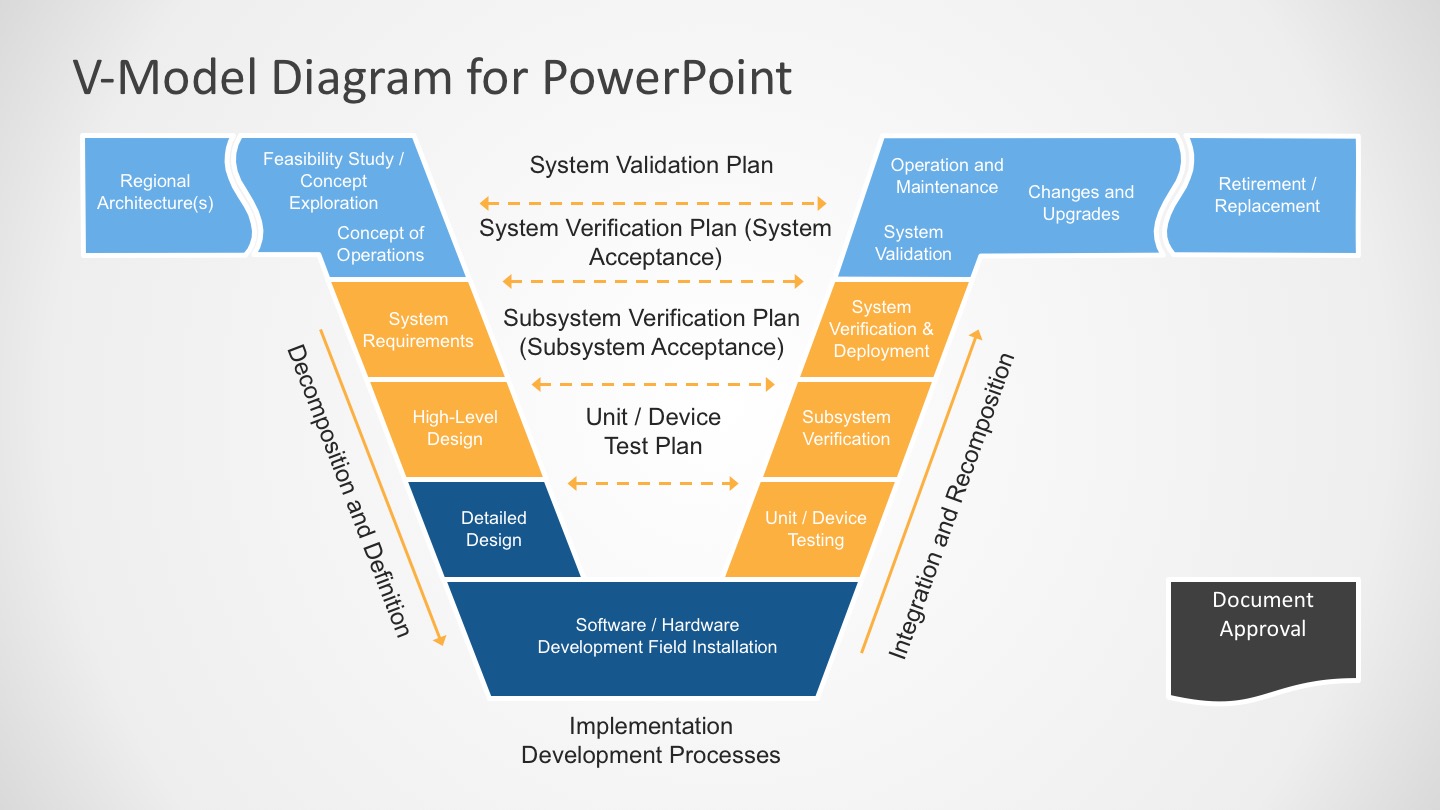
You must be logged in to download this file.
Favorite Add to Collection
Details (2 slides)

Supported Versions:
Subscribe today and get immediate access to download our PowerPoint templates.
Related PowerPoint Templates
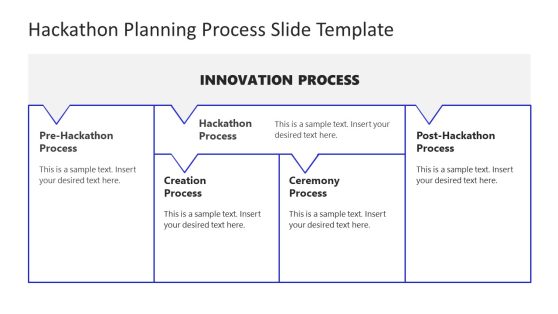
Hackathon Planning Process PowerPoint Template
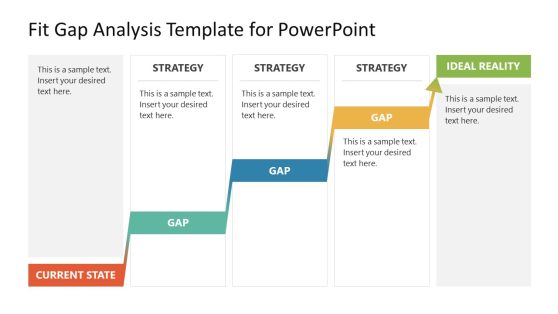
Fit-Gap Analysis PowerPoint Template
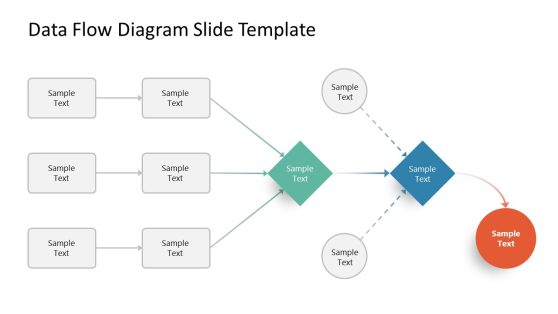
Data Flow Diagram PowerPoint Template
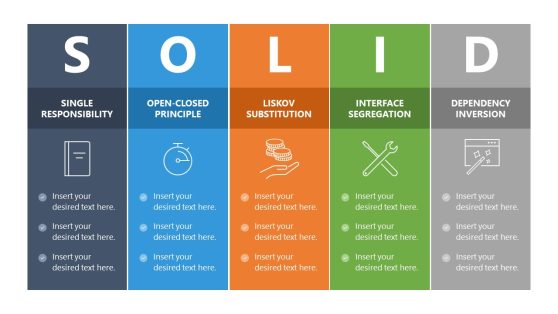
SOLID Principles PowerPoint Template
Systems Engineering V Model Diagram Template For PowerPoint
Systems Engineering V Model diagrams can be helpful in presenting project workflow. The template we are going to explore in this post is an animated PowerPoint template which can be used for making systems engineering diagrams using the V Model approach.

Create Animated Systems Engineering V Model Diagrams
The template starts with a slide depicting a V Model diagram, with placeholders to add a topic and sub-topic. You can introduce your complete model in this slide and then proceed to elaborate upon the various parts of the diagram in the slides that follow.
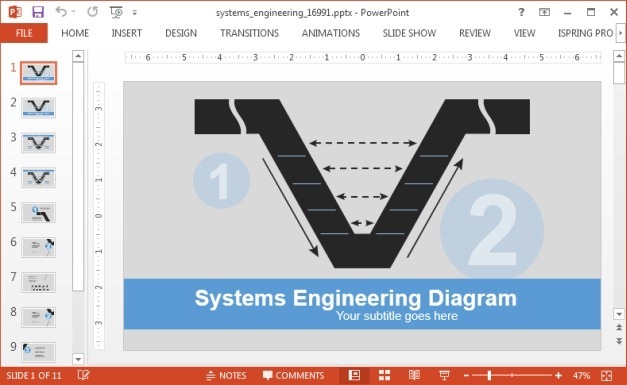
The sample slides are divided in different sections, each explaining part of the V Model diagram. The diagram is made out for you and you can add text to customize it to display relevant information related to your specific topic.

The various slides depict parts of the diagram labeled as 1, 2, 3 and so on. As a complete diagram with too many textboxes can be overwhelming for an audience and even the presenter, using this method can help better elaborate each section of the diagram in detail, with slides dedicated to different parts of the workflow.
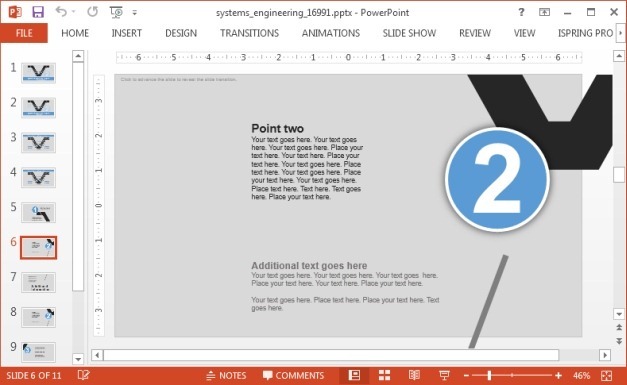
In the end, you can touch upon the conclusion, summary or any closing remarks, to conclude your presentation. This sample slide, labeled as ‘Final Point’ is meant to help end the presentation. You can also incorporate the complete V Model diagram in your concluding slides, such as by using the V Models given in slides 2-4. The objects in this animated template are editable and can be moved using drag and drop.
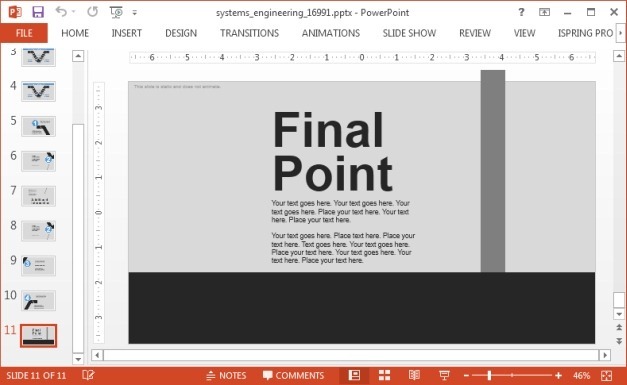
Once you’re done with the presentation, make sure you preview your slides as a Slide Show to see how your added text, images and diagrams resonate with the animations and if you’re satisfied with the final output. This V Model diagram template is available for not only PowerPoint but also Keynote. For more compatibility details, see the links given below.
Go to Presenter Media – Systems Engineering V Model Diagram Template For PowerPoint (Standard Edition)
Go to Presenter Media – Systems Engineering V Model Diagram Template For PowerPoint (Widescreen Edition)
Browse Templates
- Best PowerPoint Templates
- Accounting & Finance
- Corporate Strategy
- Health & Medical Services
- Entertainment
Popular Topics
Related blog posts.

Animated Business Excellence PowerPoint Template
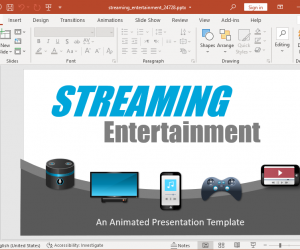
Animated Media Streaming PowerPoint Template

Animated Mobile Commerce PowerPoint Template
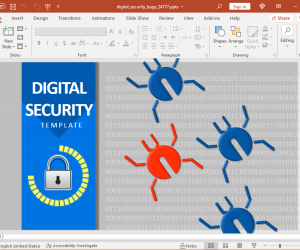
Animated Bugs in Digital Security PowerPoint Template

- My presentations
Auth with social network:
Download presentation
We think you have liked this presentation. If you wish to download it, please recommend it to your friends in any social system. Share buttons are a little bit lower. Thank you!
Presentation is loading. Please wait.
V-Shaped SDLC Model Lecture-6.
Published by Corey Lawson Modified over 5 years ago
Similar presentations
Presentation on theme: "V-Shaped SDLC Model Lecture-6."— Presentation transcript:
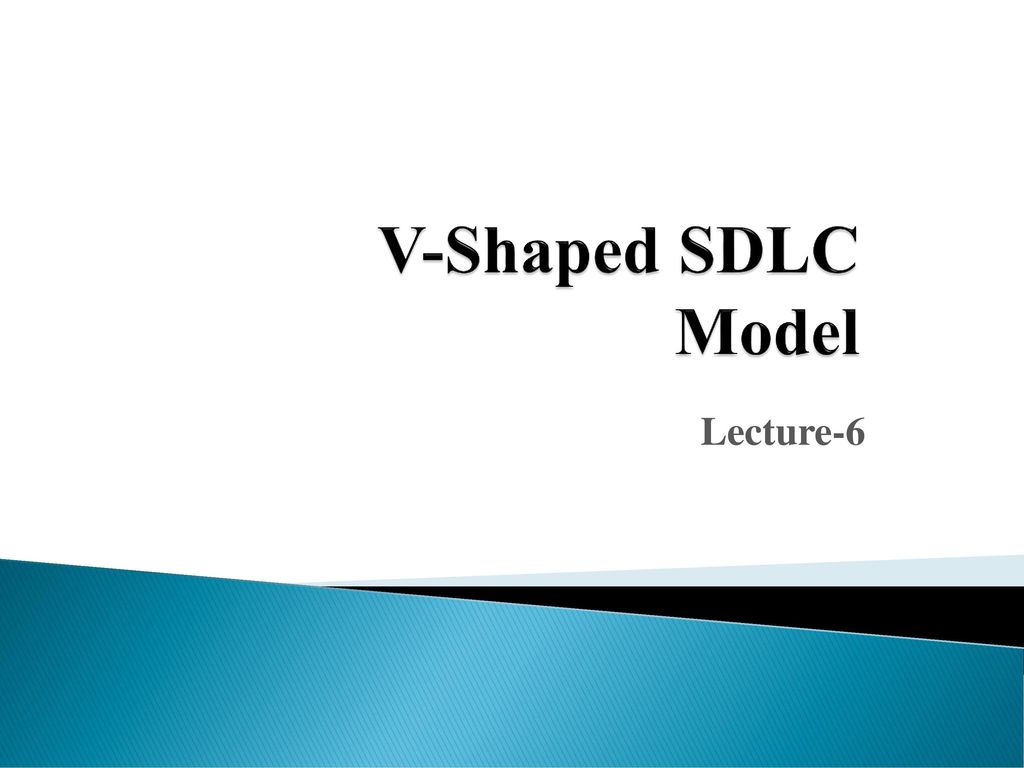
Basic SDLC Models.

Prescriptive Process models

2003 Mateusz Żochowski, Marcin Borzymek Software Life Cycle Analysis.

1 Software Processes A Software process is a set of activities and associated results which lead to the production of a software product. Activities Common.

The System and Software Development Process Instructor: Dr. Hany H. Ammar Dept. of Computer Science and Electrical Engineering, WVU.

Lecture # 2 : Process Models

CEN nd Lecture CEN 4021 Software Engineering II Instructor: Masoud Sadjadi Software Process Models.

CS487 Software Engineering Omar Aldawud

MapleLeaf, LLC SDLC Methodology. MapleLeaf, LLC, has established standard phases and processes in regards to project management methodologies for planning.

Adapted from a presentation by John Petlicki of DePaul University, USA.

CS 325: Software Engineering January 13, 2015 Introduction Defining Software Engineering SWE vs. CS Software Life-Cycle Software Processes Waterfall Process.

Sharif University of Technology Session # 3. Contents Systems Analysis and Design Sharif University of Technology MIS (Management Information System),

Software Modeling SWE5441 Lecture 3 Eng. Mohammed Timraz

Gu & Maher University of Sydney, October 2004 DECO2005 Monitoring Team Process.

CS 5150 Software Engineering

Developing safety critical systems

Software Life Cycle Model

Software Development Life Cycle (SDLC)

1COM6030 Systems Analysis and Design © University of Sheffield 2005 COM 6030 Software Analysis and Design Lecture 2- Software Process Models and Project.

S/W Project Management Software Process Models. Objectives To understand Software process and process models, including the main characteristics of.
About project
© 2024 SlidePlayer.com Inc. All rights reserved.
- Preferences

V-Model Development: Fundamentals - PowerPoint PPT Presentation
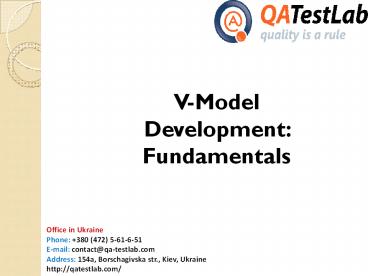
Something went wrong! Please try again and reload the page.
V-Model Development: Fundamentals
The “v-model” concept means verification and validation model. this is a consequence of performing the processes in a certain order. (by qatestlab) – powerpoint ppt presentation.
- What Are the Development Phases on the V-Model Basis?
- Requirements (business requirements, different types of specification).
- Designing of the architecture (HLD - High Level Design).
- Realization phase.
- Code writing.
PowerShow.com is a leading presentation sharing website. It has millions of presentations already uploaded and available with 1,000s more being uploaded by its users every day. Whatever your area of interest, here you’ll be able to find and view presentations you’ll love and possibly download. And, best of all, it is completely free and easy to use.
You might even have a presentation you’d like to share with others. If so, just upload it to PowerShow.com. We’ll convert it to an HTML5 slideshow that includes all the media types you’ve already added: audio, video, music, pictures, animations and transition effects. Then you can share it with your target audience as well as PowerShow.com’s millions of monthly visitors. And, again, it’s all free.
About the Developers
PowerShow.com is brought to you by CrystalGraphics , the award-winning developer and market-leading publisher of rich-media enhancement products for presentations. Our product offerings include millions of PowerPoint templates, diagrams, animated 3D characters and more.


< Go back to Login
Forgot Password
Please enter your registered email ID. You will receive an email message with instructions on how to reset your password.

Our extensive collection of V Model PPT templates promote productivity and convenience when it comes to its applications. These templates have been thoughtfully designed to ensure maximum visual impact. Explore our collection of V Model presentation templates and download the perfect template to take your presentation to new heights!
V Model 04 PowerPoint Template
Free V Model 04 Presentation Template Use this Free V Model 04 PowerPoint template to create visually appealing presentations in any professional....
- V-Model-05 - 4x3 – $4.99
- V-Model-05 - 16x9 – $4.99
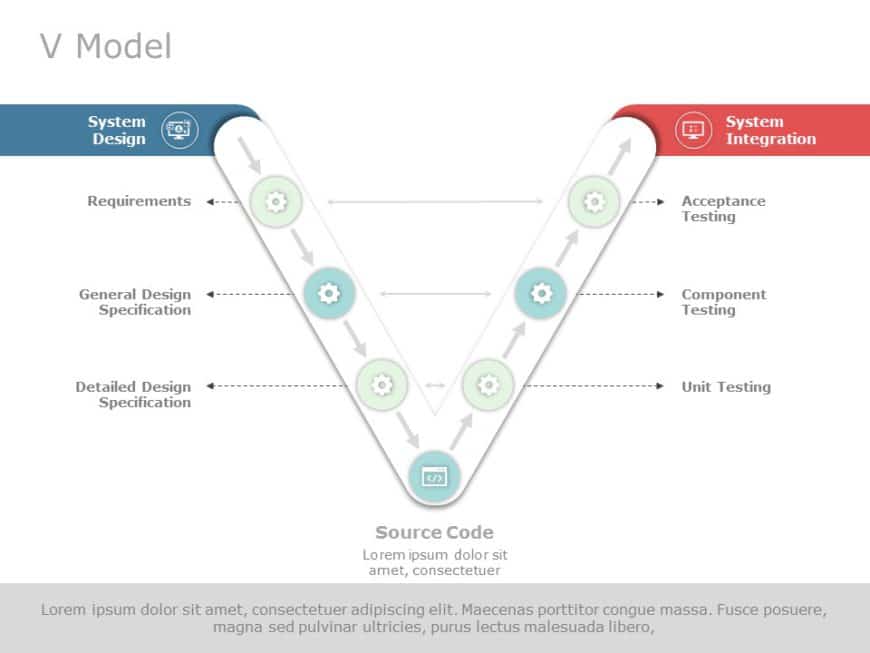
V Model 05 PowerPoint Template
V Model 05 Presentation Template Use this V Model 05 PowerPoint template to create visually appealing presentations in any professional setting. ....
- V-Model-01 - 4x3 – $4.99
- V-Model-01 - 16x9 – $4.99
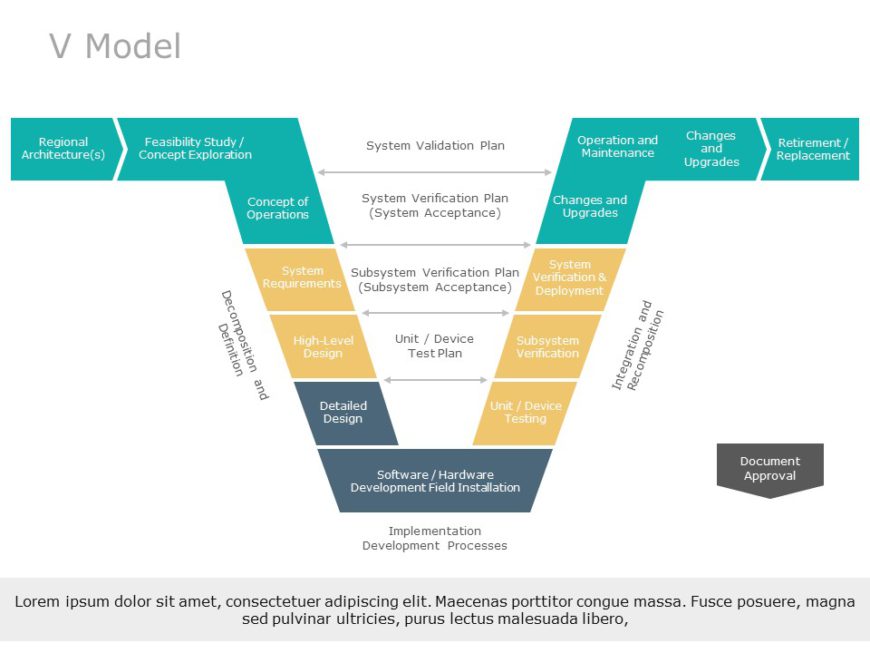
V Model 01 PowerPoint Template
V Model 01 Presentation Template Use this V Model 01 PowerPoint template to create visually appealing presentations in any professional setting. ....
- V-Model-02 - 4x3 – $4.99
- V-Model-02 - 16x9 – $4.99
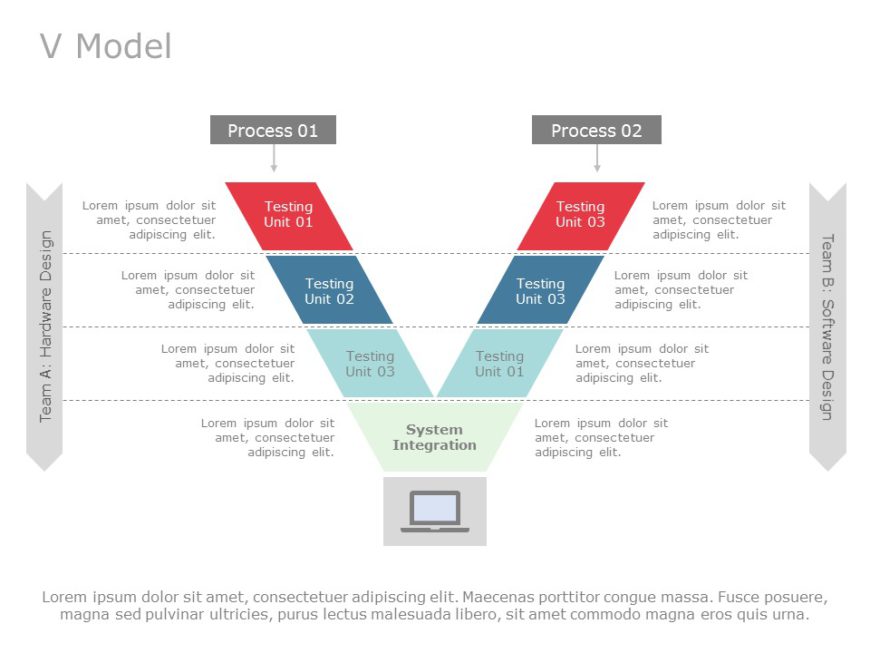
V Model 02 PowerPoint Template
V Model 02 Presentation Template Use this V Model 02 PowerPoint template to create visually appealing presentations in any professional setting. ....
- V-Model-03 - 4x3 – $4.99
- V-Model-03 - 16x9 – $4.99
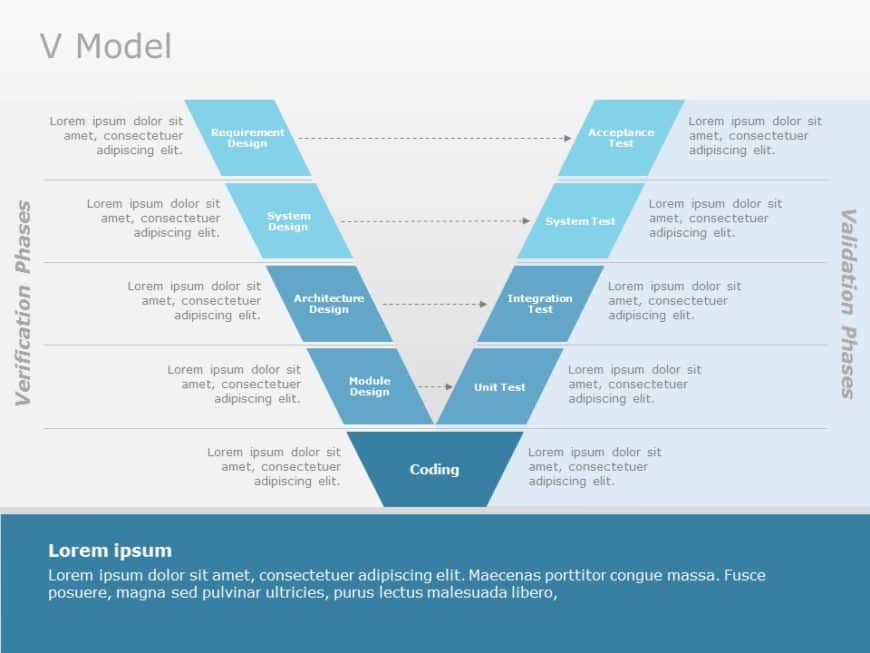
V Model 03 PowerPoint Template
V Model 03 Presentation Template Use this V Model 03 PowerPoint template to create visually appealing presentations in any professional setting. ....
- Project Management Powerpoint Template 6 - 4x3 – $4.99
- Project Management Powerpoint Template 6 - 16x9 – $4.99

Project Management 6 PowerPoint Template
Project Management 6 Presentation Template Use this Project Management 6 PowerPoint template to create visually appealing presentations in any pr....
Related Presentations
Vulnerability.
4 templates >
Network Diagrams
18 templates >
16 templates >
300 templates >
35 templates >
V Model PowerPoint Templates for Presentations:
The V Model PowerPoint templates go beyond traditional static slides to make your professional presentations stand out. Given the sleek design and customized features, they can be used as PowerPoint as well as Google Slides templates . Inculcated with visually appealing unique and creative designs, the templates will double your presentation value in front of your audience. You can browse through a vast library of V Model Google Slides templates, PowerPoint themes and backgrounds to stand out in your next presentation.
Product Pricing
What is a v model powerpoint template.
A V Model PowerPoint template is a ready-made presentation template that provides a structured framework for creating professional V Model presentations. The V Model PPT presentation template includes design elements, layouts, and fonts that you can customize to fit your content and brand.
How To Choose The Best V Model Presentation Templates?
Keep the following points in mind while choosing a V Model Presentation template for PowerPoint (PPT) or Google Slides:
- Understand your presentation goals and objectives.
- Make sure the V Model template aligns with your visual needs and appeal.
- Ensure the template is versatile enough to adapt to various types of content.
- Ensure the template is easily customizable.
Are V Model PowerPoint Templates Compatible with Google Slides?
Yes, all our V Model presentation templates are compatible and can be used as V Model Google Slides templates.
What Are the Advantages of V Model Presentation Templates?
V Model PPT presentation templates can be beneficial because they:
- Add multiple visual and aesthetic layers to your slides.
- Ensure that complex information, insights and data is presented in a simplistic way.
- Enhance the overall visual appeal of the content.
- Save you a lot of time as you don’t have to start editing from scratch.
- Improve the professional outlook of your presentation.
Can I Edit The Elements In V Model PowerPoint Templates?
Yes, our V Model PowerPoint and Google Slides templates are fully editable. You can easily modify the individual elements including icons, fonts, colors, etc. while making your presentations using professional PowerPoint templates .
How to Download V Model PowerPoint Templates for presentations?
To download V Model presentation templates, you can follow these steps:
- Select the resolution (16*9 or 4*3).
- Select the format you want to download the V Model template in (Google Slides or PowerPoint).
- Make the payment (SlideUpLift has a collection of paid as well as free V Model PowerPoint templates).
- You can download the file or open it in Google Slides.
Forgot Password?
Privacy Overview
Necessary cookies are absolutely essential for the website to function properly. This category only includes cookies that ensures basic functionalities and security features of the website. These cookies do not store any personal information
Any cookies that may not be particularly necessary for the website to function and is used specifically to collect user personal data via ads, other embedded contents are termed as non-necessary cookies. It is mandatory to procure user consent prior to running these cookies on your website.
Home Collections Project management Project V Model
Infographic V Model PowerPoint Presentation Template
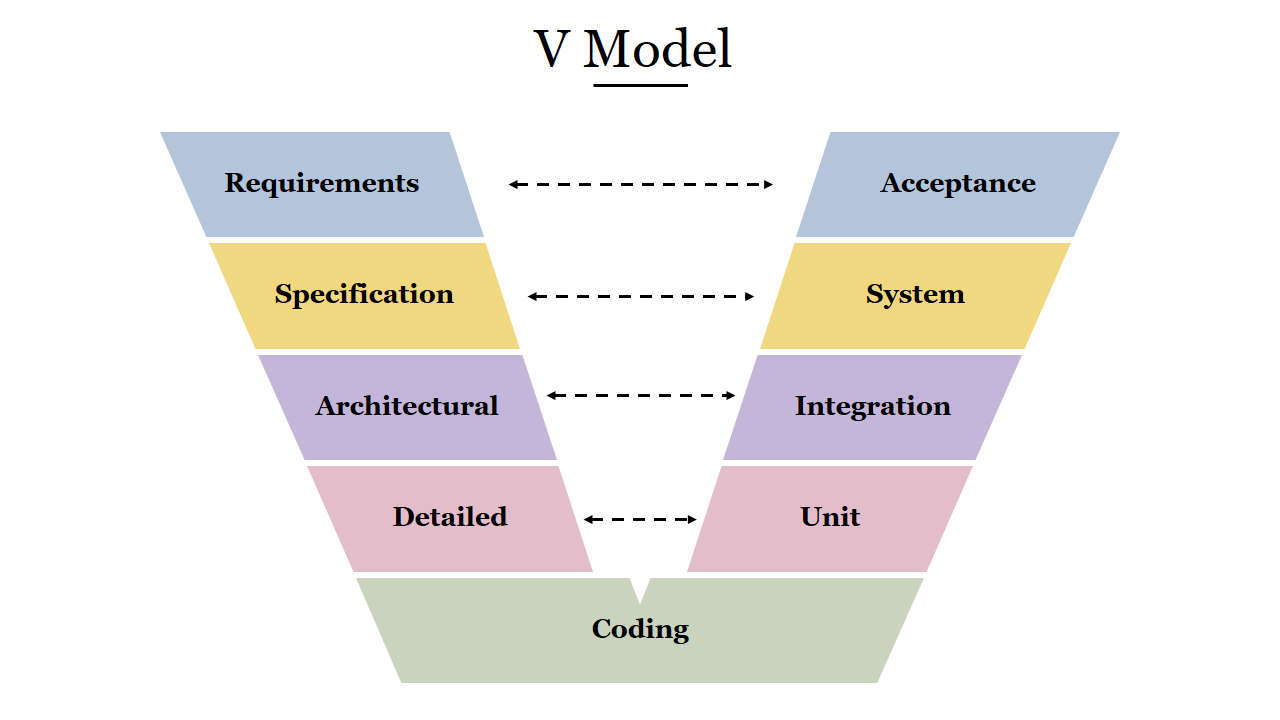
Creative Project Management PPT Template in V shape Slide
Features of this template.
- It is a pre-built design to save time.
- Fully Customizable (shape color, size & text)
- This template has a V shape theme
- Drag and drop image placeholder
- Huge Collections of slides to impress your audience
- It supports an aspect ratio of 4:3 format
- V Model Process
- V Model Over View
- V-Shaped SDLC Mode
- Validation And Verification Model
- V Diagram Model
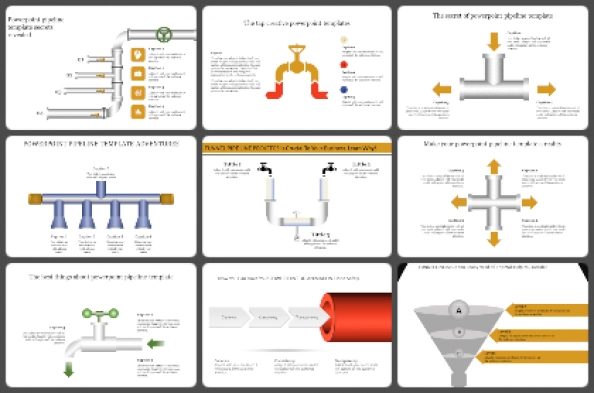
70+ Templates
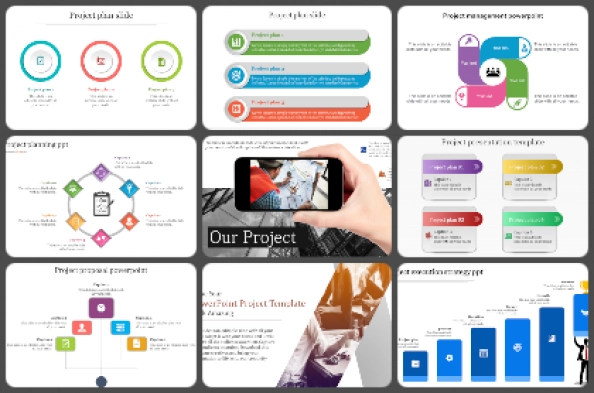
913+ Templates
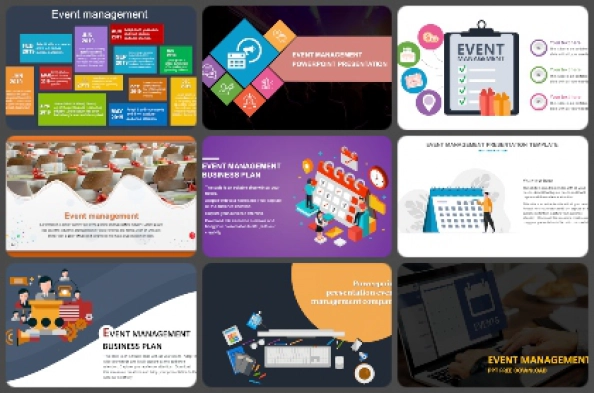
Event management
40+ Templates
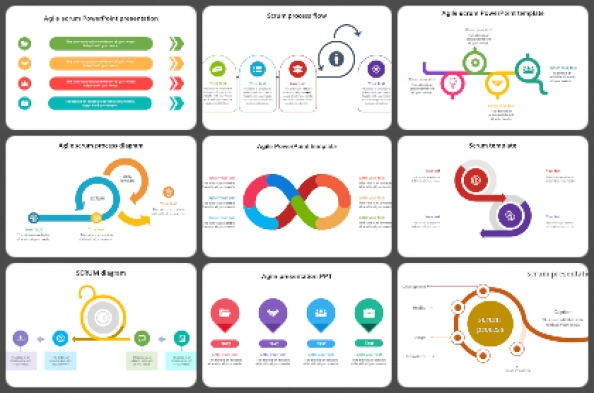
111+ Templates
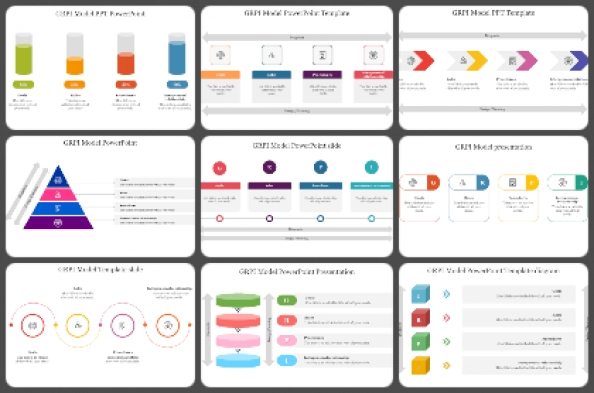
14+ Templates
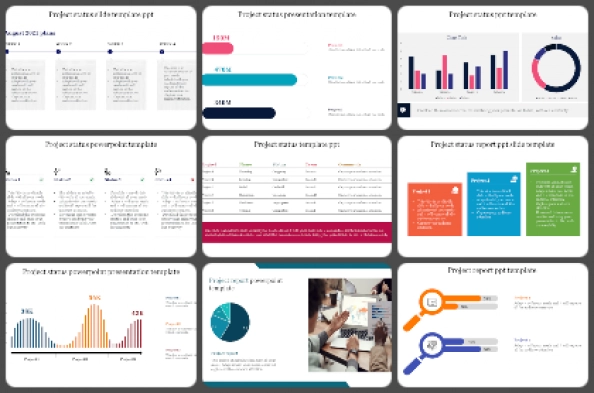
Project Status
176+ Templates
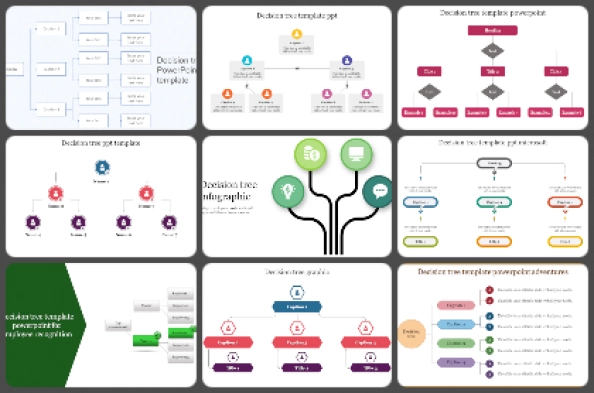
Decision Tree
41+ Templates
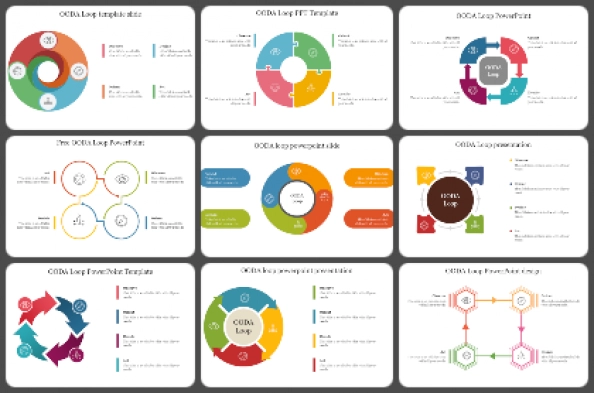
OODA Loop design
9+ Templates
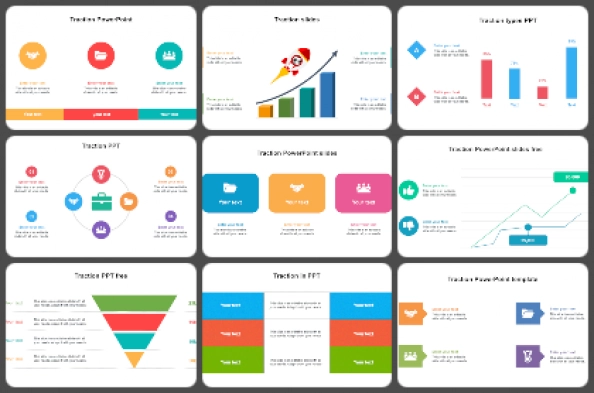
26+ Templates
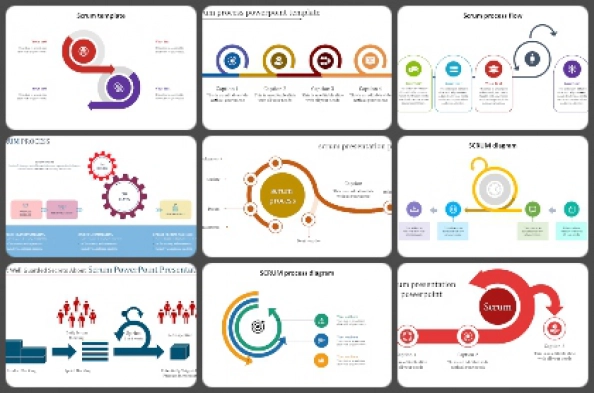
36+ Templates
You May Also Like These PowerPoint Templates

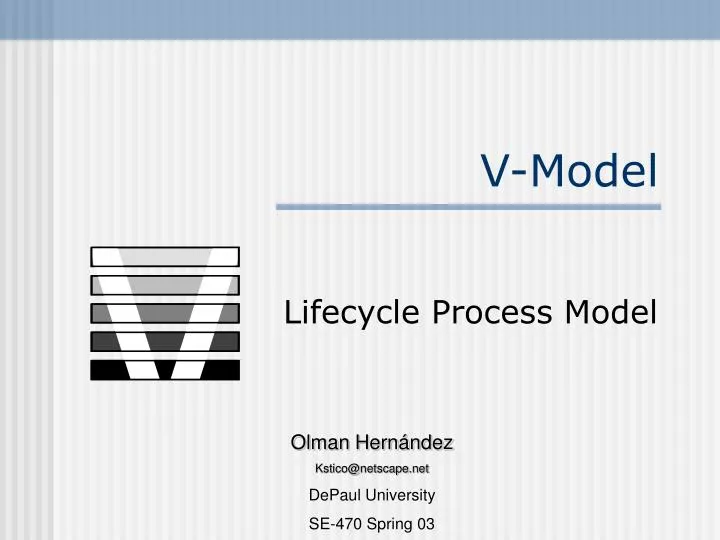
Jan 19, 2012
390 likes | 989 Views
V-Model. Lifecycle Process Model. Olman Hernández [email protected] DePaul University SE-470 Spring 03. Objectives. Brief Description of the V-model Understand the basics of the model History Principles Components Usage Guidelines Marketplace Analysis References. History.
Share Presentation
- usage guidelines
- development standard
- general services
- major update expected
- german federal armed forces
- e g product catalog

Presentation Transcript
V-Model Lifecycle Process Model Olman Hernández [email protected] DePaul University SE-470 Spring 03
Objectives • Brief Description of the V-model • Understand the basics of the model • History • Principles • Components • Usage Guidelines • Marketplace Analysis • References
History • 1986 - IABG for the Federal Ministry of Defense • 1991 – Obligatory standard • 1992 – Federal Ministry of the Interior • 1997 - Comprehensive revision • 2004 - Major Update Expected
Principles • Independence of methods and tools • Independence of Organizations • Separation into “submodels” • Orientation to activities and products • Adaptability of the model
Standardization • The value of a standard • Reduction of cost in the entire lifecycle • Improvement of software quality • Better communication between customer and contractor • Regulations on 3 levels • Procedure (what) • Allocation of methods (how) • Functional tool requirements (what)
Structure • All levels the regulations are structured according to activity areas • Systems development • Quality assurance • Configuration management • Project management • Development standard developed for each area.
Configuration Management Quality Assurance System Development Project Management Procedure Methods Tool Requirements Levels of Standardization
Configuration Management Quality Assurance System Development Project Management Procedure Methods Tool Requirements General Directives
Procedure • General directive 250 • What has to be done: • Activities to be carried out • Results that have to be produced • Content of the results • Roles • Lifecycle process model
Structure • Binding Regulations • Activities • Products • Supplements with regard to Authorities • German Federal Armed Forces • Civilian Federal Administration • Collection of Manuals • Special topics • Object Oriented Languages • Incremental Development • Use of Off-the-Shelf Products
Tailoring • No important document is “forgotten” • Tailoring relevant for tendering • Selection of the necessary activities and products • Deletion conditions • The resulting subset of the Lifecycle is put together in the Project Manual • Technical Tailoring • Adapting to conditions during the course of the project
Tailoring Steps
Cooperation of Sub-models
Software Development • SD1-System Req. analysis • Description of the Req. of the system and its environment, Risk Analysis , and User Req. • SD2–System design • Segmentation of the system into SW/HW • SD3-SW/HW requirement analysis • Detail Technical Requirements • SD4-Preliminary SW design • Structuring of the interfaces and interaction of SW components
Software Development • SD5-Detailed SW design • Description of functionality, Data administration and error handling of SWC • SD6-SW implementation • Coding in chosen programming language • SD7-SW integration • Integration of modules • SD8-System integration • Integration of SW and HW components • SD9-Transition to utilization • Activities for Deployment into Production
Software Development
Quality Assurance • QA1-Initialization • Generated the QA and Assessment Plan • QA2-Assessment Preparation • Generation of unambiguous Assessment specification and procedures & Req. of Assessment Environment • QA3-Process Assessment of Activities • Specified procedures were adhered to during the realization of an activity • QA4-Product Assessment • Assessment with respect to the formal criteria & the contents of the product. Assessment Report generated. • QA5-Reporting • Assessment Reports are assessed in regular intervals and the results submitted to PM.
Configuration Management • CM1-CM Initialization • Generation of the CM plan and setting of the CM resources • CM2-Product and CM • Administration of products, configurations and rights • CM3-Change Management • Controlled artifacts are recorded and administered • CM4-CM Services • General services (e.g Product Catalog)
Project Management • PM1-Project Initialization • PM2-Placement/Procurement • PM3-Contractor Management • PM4-Detailed Planning • PM5-Cost/Benefit Analysis • PM6-Phase Review • PM7-Risk Management
Project Management • PM8-Project Control • PM9-Information Service/Reporting • PM10-Training/Instruction • PM11-Supplying Resources • PM12-Allocation of Work Orders • PM13-Staff Training • PM14-Project Completion • Final Project Report
General View
Methods Allocation • General directive 251 • How is something to be done: • Methods used to perform activities • Means of presentation in the results • Basic: specific/delimited aspect of the system • E/R modeling,state transition modeling, functional decomposition • Complex:comprise of various methodical components and integrate them into a total method • Graphical Enginnering system, integrated software technology
Methods Allocation • Categories of methods: basic methods that offer different solution approaches for a certain class of tasks. Only one required • Estimation models: Function Point Method, Constructive Cost Model • Formal Specification: Temporal logic, Mathematical Specification, Algorithmic • Methods allocation • Allocation tables • Methods interfaces
Allocation Table • Briefly describe how the methods are to be used in the individual activities
Methods Interfaces • Describe what information is exchanged between the individual methods and what to take into account when exchanging information.
Tool Requirements • General Directive 252 • What is to be used to do something: • Functional characteristics must the tools have • Introduces the Software Development Environment • Use for: • Selection of tools • Evaluation • Further Development of tools
Tool Requirements • SDE reference model • User Interface • Work flow management • Security and integrity requirements • Software development • Quality assurance • Configuration Management • Project Management • Object Management
Benefits • Is complete, All functional areas • Is mature • Complies w/ Best Practices • Open source • Supports when tendering • Adaptable to circumstances • Adapt to Phase Models. • Living Methodology and Products
Drawbacks • Does not include the maintenance phase. It is considered a Scenario. • Is project specific, does not extend to the organization level.(Rev.2004) • Delivery Vehicle. PDF format • Lack of depth on some activities • No Templates
Usage Guidelines • When/How to Use • Basis for contracts • Guideline • Communication Basis • When not to Use • Inexperience Development Team • Implementation • Very easy to understand • Wide application spectrum • Tailoring, Organization and tool Independent • Support, mostly German
Marketplace Analysis • Key players • Change Control Board • Industrial and Public authority users • Obliged to deal with all submitted change request • IABG, Federal Ministry of the interior • Products • In-Step by Microtool • Market Data • EUROMETHOD, EU Project • Basis of Austria’s IT-BVM and Switzerland’s HERMES • DaimlerChrysler Aerospace,Defense and Civil Syst. Div. • Siemens corporate Technology division • Binding obligatory regulation in Germany (Civilian & Defense)
V-Model and CMM
References • IABG, English Version • http://www.v-modell.iabg.de/vm97.htm#ENGL • University of Bremen in Germany • http://www.informatik.uni-bremen.de/gdpa/
- More by User

V – Model (Software Development)
V. V – Model (Software Development). By: Jaya Gupta Asnani. The V-Shaped Model. V-Model evolved from waterfall Model. Each phase must be completed before the next phase begins.
2.47k views • 14 slides

Part V The Generalized Linear Model
Part V The Generalized Linear Model. Chapter 16 Introduction. GENERAL LINEAR MODELS. ε ~ Normal. R: lm(). ANOVA. Multiple Linear Regression. t-test. Simple Linear Regression. ANCOVA. GENERALIZED LINEAR MODELS. Linear combination of parameters . R: glm(). Multinomial. Binomial.
556 views • 22 slides
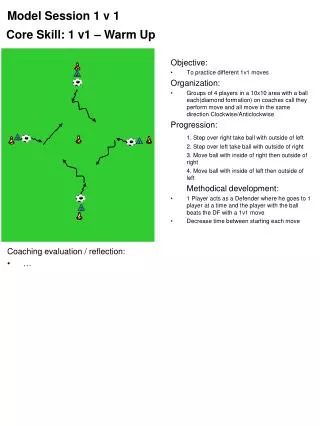
Model Session 1 v 1
Model Session 1 v 1. Core Skill: 1 v1 – Warm Up . 4. Objective: To practice different 1v1 moves Organization: Groups of 4 players in a 10x10 area with a ball each(diamond formation) on coaches call they perform move and all move in the same direction Clockwise/Anticlockwise Progression:
171 views • 3 slides
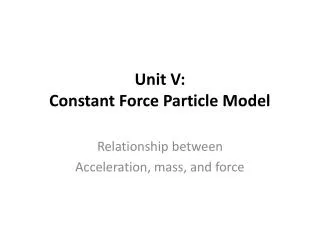
Unit V: Constant Force Particle Model
Unit V: Constant Force Particle Model. Relationship between Acceleration, mass, and force. Unit V: Constant Force Particle Model. Unit Learning Expectation
399 views • 11 slides

Šta agencije žele od v ebsajtova, model poželjnih v ebsajtova
Šta agencije žele od v ebsajtova, model poželjnih v ebsajtova. Serbia Online Advertising Tour - Palić. Lokalno tr žište online oglašavanja. Online AdSpend – AdSpend per user.
355 views • 25 slides
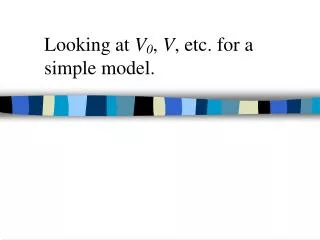
Looking at V 0 , V , etc. for a simple model.
Looking at V 0 , V , etc. for a simple model. Correlation/Covariance Model. E( e ij )=0 Let var(e ij ) = 2 , all i’ s and j ’s. Let cov(e ij , e ij’ ) = r 2 , all j j ’ Let cov( e ij , e i’j’ )=0 , all i i’. What is Correlation and Covariance?.
300 views • 24 slides

Watershed Model Phase V
Watershed Model Phase V. Presented by Russell Mader, USDA NRCS NSC Coordinator. TSWG Meeting Chesapeake Bay Program Office April 7, 2004. Presentation Objectives. Update on major landuses & subcategories Issues that have come up Schedule of calibration & decisions. Presentation Outline.
236 views • 12 slides

Phase V Watershed Model
Phase V Watershed Model. We have 1994-2000 flows, revised March 2006. Used to drive CH3D We have May 2006 Phase V loads for WQM. Revisions to Phase V loads are possible. Phase IV.3 Loads. Phase V Loads. Phase IV.3 Loads. Phase V Loads. Phase IV.3 Loads. Phase V Loads. Phase IV.3 Loads.
472 views • 34 slides

v on Neumann model
v on Neumann model. The model defines a computer as four subsystems: memory, arithmetic logic unit, control unit, and I/O. The data and program are stored as binary patterns in memory. Sequential execution of instructions. ASCII Code.
302 views • 15 slides

Multiple V-model
3. Multiple V-model. Introduction. In embedded systems, the test object is not just executable code. First a model of the system is built on a PC, which simulates the required system behavior.
528 views • 21 slides
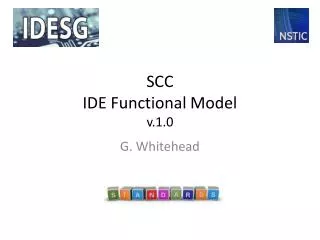
SCC IDE Functional Model v.1.0
SCC IDE Functional Model v.1.0. G. Whitehead.
137 views • 7 slides

V-Model Development: Fundamentals
The “V-model” concept means verification and validation model. This is a consequence of performing the processes in a certain order. (by QATestLab)
102 views • 8 slides

Module 5: WinSLAMM v 9.1 Model Features
Module 5: WinSLAMM v 9.1 Model Features. Robert Pitt, P.E., Ph.D. Dept. of Civil, Construction and Environmental Engineering University of Alabama John Voorhees, PE, PH Earth Tech, Inc. To Enter the Program. or. or. To Review Current File Data.
649 views • 64 slides

Powerpoint Templates
Icon Bundle
Kpi Dashboard
Professional
Business Plans
Swot Analysis
Gantt Chart
Business Proposal
Marketing Plan
Project Management
Business Case
Business Model
Cyber Security
Business PPT
Digital Marketing
Digital Transformation
Human Resources
Product Management
Artificial Intelligence
Company Profile
Acknowledgement PPT
PPT Presentation
Reports Brochures
One Page Pitch
Interview PPT
All Categories

V Model Powerpoint Ppt Template Bundles
Our V Model Powerpoint Ppt Template Bundles are topically designed to provide an attractive backdrop to any subject. Use them to look like a presentation pro.
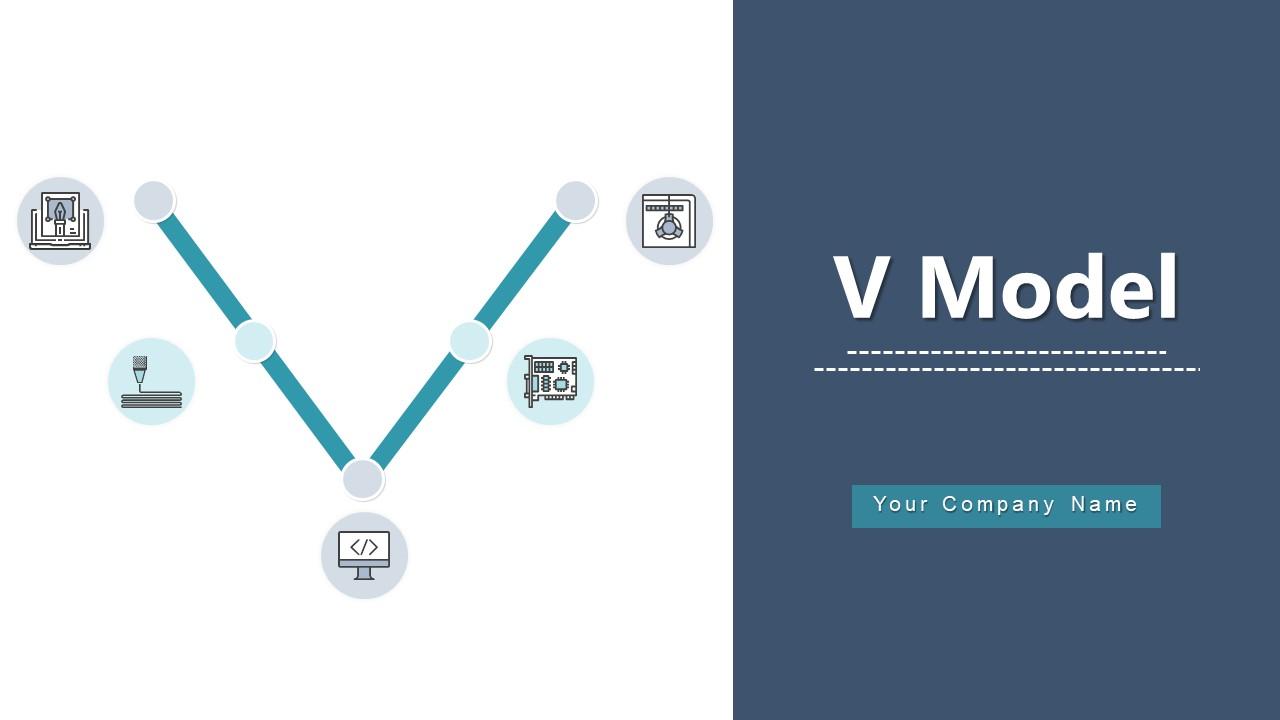
- Add a user to your subscription for free
You must be logged in to download this presentation.
Do you want to remove this product from your favourites?
PowerPoint presentation slides
Deliver a credible and compelling presentation by deploying this V Model Powerpoint Ppt Template Bundles . Intensify your message with the right graphics, images, icons, etc. presented in this complete deck. This PPT template is a great starting point to convey your messages and build a good collaboration. The twelve slides added to this PowerPoint slideshow helps you present a thorough explanation of the topic. You can use it to study and present various kinds of information in the form of stats, figures, data charts, and many more. This V Model Powerpoint Ppt Template Bundles PPT slideshow is available for use in standard and widescreen aspects ratios. So, you can use it as per your convenience. Apart from this, it can be downloaded in PNG, JPG, and PDF formats, all completely editable and modifiable. The most profound feature of this PPT design is that it is fully compatible with Google Slides making it suitable for every industry and business domain.

People who downloaded this PowerPoint presentation also viewed the following :
- Complete Decks , All Decks , Infographic , Mini Decks , Infographic
- Framework ,
- Engineering ,
- Software development
V Model Powerpoint Ppt Template Bundles with all 17 slides:
Use our V Model Powerpoint Ppt Template Bundles to effectively help you save your valuable time. They are readymade to fit into any presentation structure.

Ratings and Reviews
by Dante Wells
April 11, 2022
by Brown Baker


IMAGES
VIDEO
COMMENTS
V model presentation. Feb 19, 2017 • Download as PPTX, PDF •. 12 likes • 17,959 views. N. Niat Murad. here you will find the following topics: Introduction (definition) Objectives V-Model Diagram Phases of V model Advantages Disadvantages Conclusion. Read more.
The V-Model (Validification and Verification Model) is named after its shape, which resembles the letter "V." It divides the SDLC (Software Development Life Cycle) into phases, each associated with a corresponding testing phase. ... Template 1: V Model PowerPoint Presentation. This PPT Presentation explains the left sides and the right ...
The V-model is a software development process that describes the relationship between each phase of the development life cycle and its corresponding testing phase. Our expert explains the ins and outs of this methodology. Written by Artem Oppermann. Published on Apr. 06, 2023. Image: Shutterstock / Built In.
The V-Model is a software development life cycle (SDLC) model that provides a systematic and visual representation of the software development process. It is based on the idea of a "V" shape, with the two legs of the "V" representing the progression of the software development process from requirements gathering and analysis to design ...
This slide represents the V model of the software development life cycle, including its various phases, two processes, and steps taken at each phase.The best PPT templates are a great way to save time, energy, and resources. Slidegeeks have 100precent editable powerpoint slides making them incredibly versatile.
The image of v-shaped chart can be used to make presentations on software development. Many modern and helpful softwares are being developed each day and this model has an organized way for new developments.
Slide 1 of 17. V Model Powerpoint Ppt Template Bundles. Slide 1 of 6. When To Use V Model Software Development Process Ppt Demonstration. Slide 1 of 5. V model multicolored diagram with arrow and systems. Slide 1 of 5. V model for development and testing with 3 arrows. Slide 1 of 6.
Instead of moving down in a linear way, the V-model propose an alternate way followed by process steps that are upwards after the coding phase is completed, forming a V shape design. This V-Model PowerPoint template can be used by software development professionals, project managers, developers and IT architects to prepare presentations on ...
You can also incorporate the complete V Model diagram in your concluding slides, such as by using the V Models given in slides 2-4. The objects in this animated template are editable and can be moved using drag and drop. Once you're done with the presentation, make sure you preview your slides as a Slide Show to see how your added text ...
The v model PowerPoint template can be used by software development professionals, project managers, and IT designers to prepare the presentation on software development. The PowerPoint demonstrates the relationship between each phase of the development lifecycle.
A. Awais Saleem. V- model means Verification and Validation model. Just like the waterfall model, the V-Shaped life cycle is a sequential path of execution of processes. Each phase must be completed before the next phase begins. V-Model is one of the many software development models. Testing of the product is planned in parallel with a ...
Presentation Transcript. The V-Shaped Model • V-Model evolved from waterfall Model. • Each phase must be completed before the next phase begins. • Instead of moving down in a linear way, the process steps are bent upwards after the coding phase, to form the typical V shape. • Testing is emphasized in this model more than in the ...
Presentation transcript: 2 6.1 V-Shaped SDLC Model The Verification and Validation Model commonly known as V - Shaped Model An extension of the Waterfall Model that emphasizes the verification and validation of the product. Like Waterfall model different phases progress in a sequential manner. Testing of the product is planned in parallel ...
1. 3. V- model means Verification and Validation model. V-Shaped life cycle is a sequential path of execution of processes. Each phase must be completed before the next phase starts. Testing of the product is planned in parallel with a corresponding phase of development. 4. The V-shaped model should be used for small to medium sized projects ...
The "V-model" concept means verification and validation model. This is a consequence of performing the processes in a certain order. (by QATestLab) - A free PowerPoint PPT presentation (displayed as an HTML5 slide show) on PowerShow.com - id: 86797f-YzNjM
The V Model PowerPoint templates go beyond traditional static slides to make your professional presentations stand out. Given the sleek design and customized features, they can be used as PowerPoint as well as Google Slides templates. Inculcated with visually appealing unique and creative designs, the templates will double your presentation ...
Download our V Model PowerPoint Template to explain your Project ideas and plan to your audience. Users can use this Project slide to present their Project report in a project meeting. This template has nine text areas in V shape. You can easily add nine types of Project information to this template. In Each caption, users can add a detailed ...
Slide 1 of 6. Verification Phases Of V-Model SDLC Ppt Powerpoint Presentation File Topics. Slide 1 of 6. Validation Phases Of V Model Software Development Process Ppt Information. Slide 1 of 5. V model with multiple boxes and arrows. Slide 1 of 5. V model for task implementation with colored arrows. Slide 1 of 6.
V Model PPT - View presentation slides online. V Model PPT
Presentation Transcript. Key Points • V model is also called verification and validation model. • The V-Shaped life cycle is a sequential path of execution of processes. • Each phase must be completed before the next phase begins. • Testing of the product is planned in parallel with a corresponding phase of development.
Presentation Transcript. V-Model Lifecycle Process Model Olman Hernández [email protected] DePaul University SE-470 Spring 03. Objectives • Brief Description of the V-model • Understand the basics of the model • History • Principles • Components • Usage Guidelines • Marketplace Analysis • References. History • 1986 - IABG ...
And for this, all you will have to do is include our pre-designed PowerPoint V Model Template into your visual aids. Professionally built by a team of field experts, you get a creative advantage with the set. Ready for immediate use, your entire task gets curtailed to adding content and editing. The template proves a best way to structure your ...
Prior to GPT-4o, you could use Voice Mode to talk to ChatGPT with latencies of 2.8 seconds (GPT-3.5) and 5.4 seconds (GPT-4) on average. To achieve this, Voice Mode is a pipeline of three separate models: one simple model transcribes audio to text, GPT-3.5 or GPT-4 takes in text and outputs text, and a third simple model converts that text back to audio.
PowerPoint presentation slides: Deliver a credible and compelling presentation by deploying this V Model Powerpoint Ppt Template Bundles . Intensify your message with the right graphics, images, icons, etc. presented in this complete deck. This PPT template is a great starting point to convey your messages and build a good collaboration.
And it was a conceptual presentation for Tesla's robotaxi concept that almost killed it. May 10, 2024 at 1:29pm ET. ... crossover SUV, a car that resembled a slimmed-down Model Y. The vehicle ...